Ditapis dengan

The Rock of The Lamongan Volcano.
In accordance with Lorie and Prof. Behrens we have determined all collected samples as real basalts. The microscopic praeparates only show difference in relative number and size of the separated crystalls between them, and with respect to the groundmass, also in his capacity of the groundmass itself. As conson with basalt, the olivine exclusively appears as porphyric separation and not in the g…
- Edisi
- -
- ISBN/ISSN
- -
- Deskripsi Fisik
- 4 hml
- Judul Seri
- -
- No. Panggil
- PVG E.086-1

Rocks Hard, Soft, Smooth, And Rough
- Edisi
- -
- ISBN/ISSN
- 1-4048-0334-3
- Deskripsi Fisik
- 24 hlm.
- Judul Seri
- -
- No. Panggil
- PSG 552 ROS r
- Edisi
- -
- ISBN/ISSN
- 1-4048-0334-3
- Deskripsi Fisik
- 24 hlm.
- Judul Seri
- -
- No. Panggil
- PSG 552 ROS r
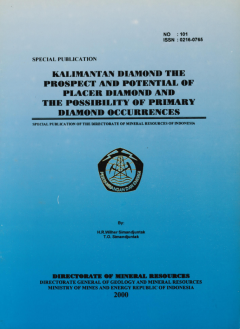
Kalimantan diamond the prospect and potential of placer diamond and the possi…
Diamonds have been known since the sixth century to occur in Kalimantan, which are mostly derivedfrom placer deposits. The placer deposits are originally occurred in the 4 recent stream deposits or paleochannel deposits. The primary diamond derived from kimberlite, lamproite rock or deep seatedfault, is still not clearly known. Although the occurrences ofprimary diamond sources are st…
- Edisi
- -
- ISBN/ISSN
- 0216-0765
- Deskripsi Fisik
- 50p.,ill. 14 x 21 cm
- Judul Seri
- -
- No. Panggil
- PK No. 101

Magmas and Magmatic Rocks
The past 25 years have been vast expansion in the field of igneous petrology to accommodate a wide range of new information from both the Earth and other terrestrial planets. This has made the subject far more interesting, but has also resulted in a marked increase in both the amount and the degree of specialization of the available literature.
- Edisi
- -
- ISBN/ISSN
- 0-582-30080-0
- Deskripsi Fisik
- 258 hal.; gbr.; tabel
- Judul Seri
- -
- No. Panggil
- PVG 552.1 MID M c.1

Proceedings of the second symposium integrated geological survey of Northern …
The serpentinised ultramafic rocks of Northern Sumatra occur in linear zones along the main faults of the Sumatra Fault system within the Barisan Mountains They are considered to be alpine type and are discussed within a framework of a general review of the nature and origin of serpentinite belts. The greatest development of ultramafics o…
- Edisi
- -
- ISBN/ISSN
- 0216 - 0811
- Deskripsi Fisik
- 33p.,ill. 14 x 21 cm
- Judul Seri
- -
- No. Panggil
- PK No. 3
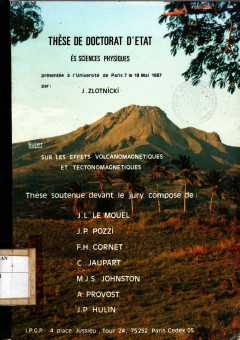
Sur Les Effets Volcanomagnetiques Et Tectonomagnetiques
Attire par magnetisme des Roches puis rapidement par les applications du magnetisme a la volcanologie et a la sesmogenese, j'ai trouve au fil des annes a L'IPGP puis, a l'exterieur, des cooperations scientifiques et techniques qui m'ont permis de developper mes travaux.
- Edisi
- -
- ISBN/ISSN
- -
- Deskripsi Fisik
- 373 hal.; gbr.; tabel.
- Judul Seri
- -
- No. Panggil
- PVG (043)551.21 ZLO s c.1
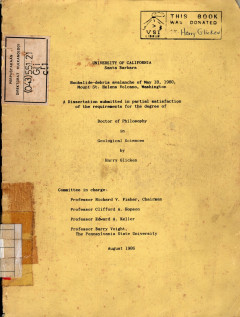
Rockslide Debris Avalanche Of May 18, 1980, Mount St. Helens a Volcano, Washi…
This work provides a detailed picture of the rockslide-debris avalanches of the May 18, 1980, eruption of Mount St. Helens Volcano. The work provides a characterization of the deposit, a reinterpretation of the details of the first minutes of the eruption of May 18, and insight into the transport mechanism of the mass movement.
- Edisi
- -
- ISBN/ISSN
- -
- Deskripsi Fisik
- 280 hal,; gbr.
- Judul Seri
- -
- No. Panggil
- PVG (043)551.21 GLI r c.1
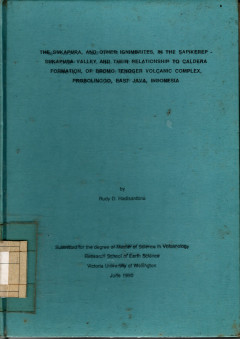
The Sukapura, and other Ignimbrites,In The Sapikerep Sukapura Valley And Thei…
Mt. Bromo - Tengger is al caldera complex located some 45km to the south of Probolinggo, East Java, Indonesia. There are at least two calderas Ngadisari and Sandsea which are 8x8 km and 6x7 km in size respectively.
- Edisi
- -
- ISBN/ISSN
- -
- Deskripsi Fisik
- 154 hal,; gbr.; tabel; foto; peta.
- Judul Seri
- -
- No. Panggil
- PVG (043)552.21(E3) HAD s c.1
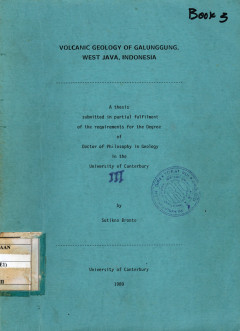
Volcanic Geology of Galunggung West Java, Indonesia (Book III)
Galunggung volcanic rocks are included within the Galunggung Group and can be divided into old Galunggung formation, Tasikmalaya Formation and Cibanjaran formation. The firs formation represents rocks of old Galunggung stratovolcano (50.000 - 10.000 yrs. BP?), the second formation covers rocks erupted during caldera formation (4200 - 150 yrs. BP) and the third one comprises rocks in t822, 1894,…
- Edisi
- -
- ISBN/ISSN
- -
- Deskripsi Fisik
- 131 hal,; gbr.; peta; tabel.
- Judul Seri
- -
- No. Panggil
- PVG (043)551.21(E1) BRO v c.1 III

Volcanic Geology of Galunggung West Java, Indonesia (Book I)
Galunggung volcanic rocks are included within the Galunggung Group and can be divided into old Galunggung formation, Tasikmalaya Formation and Cibanjaran formation. The firs formation represents rocks of old Galunggung stratovolcano (50.000 - 10.000 yrs. BP?), the second formation covers rocks erupted during caldera formation (4200 - 150 yrs. BP) and the third one comprises rocks in t822, 1894,…
- Edisi
- -
- ISBN/ISSN
- -
- Deskripsi Fisik
- 347 hal,; gbr.; tabel.
- Judul Seri
- -
- No. Panggil
- PVG (043)551.21(E1) BRO v c.1 I
 Karya Umum
Karya Umum  Filsafat
Filsafat  Agama
Agama  Ilmu-ilmu Sosial
Ilmu-ilmu Sosial  Bahasa
Bahasa  Ilmu-ilmu Murni
Ilmu-ilmu Murni  Ilmu-ilmu Terapan
Ilmu-ilmu Terapan  Kesenian, Hiburan, dan Olahraga
Kesenian, Hiburan, dan Olahraga  Kesusastraan
Kesusastraan  Geografi dan Sejarah
Geografi dan Sejarah